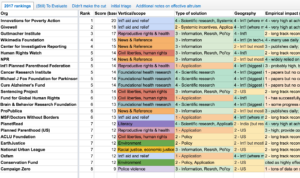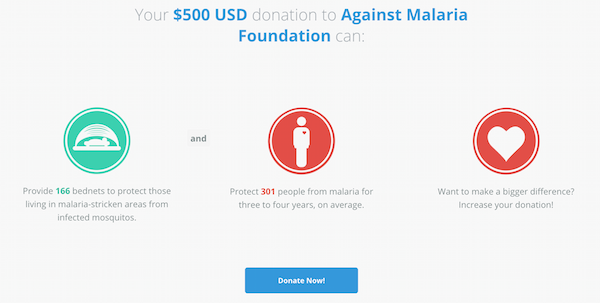Effective health research, part 2
I previously looked into potentially effective ways to donate to health research, including leading causes of death/poor quality of life. I’ve been looking into this again and have a few updates. I haven’t thoroughly vetted every one of these organizations, and I welcome further feedback — but I’ve spent a few hours researching. And for cancer research and Parkinson’s research in particular, I feel quite confident about these recommendations.
Cancer research
In A Practical Guide To The Best Medical Research Charities, the Glaucoma Research Foundation has some good tips about donating to health research in general, and about some good specific organizations (you’ll never guess who they recommend for eye research ;) ). For cancer research, they make the following recommendation:
The Cancer Research Institute easily wins the award for the best cancer research charity. CRI net over $25 million in funding during 2016, and uses 87% of those funds to support immunotherapy research.
CRI is a great charity because—aside from supporting many scientists with funds—they also run a clinical accelerator program which gets the best ideas from the laboratory into the clinic as fast as possible. In total, CRI has funded over 120 clinical trials and invested over $344 million over the course of its existence.
Consumer Reports concurs with this recommendation, based on high ratings from BBB Wise Giving Alliance, Charity Navigator and Charity Watch.
Cardiovascular research
The Glaucoma Research Foundation also has a recommendation here, with examples of demonstrated impact:
The Cardiovascular Research Foundation wins the best cardiovascular disease award because of its thirty year history of making fundamental contributions to critical research. The CRF has played a role in a few major advancements in cardiovascular medicine, including:
- Drug-eluting stents
- Transcatheter aortic valve replacements (TAVR)
- Bioresorbable stents
With proven impact over time, the CRF is an excellent research charity to consider donating to.
Unlike the Cancer Research Institute, I didn’t immediately find other coverage/analysis of this foundation — in part because it’s a private foundation and thus not covered by tools like Charity Navigator. But it’s encouraging to see evidence of efficacy over time.
Neurodegenerative disease research
Comments off


